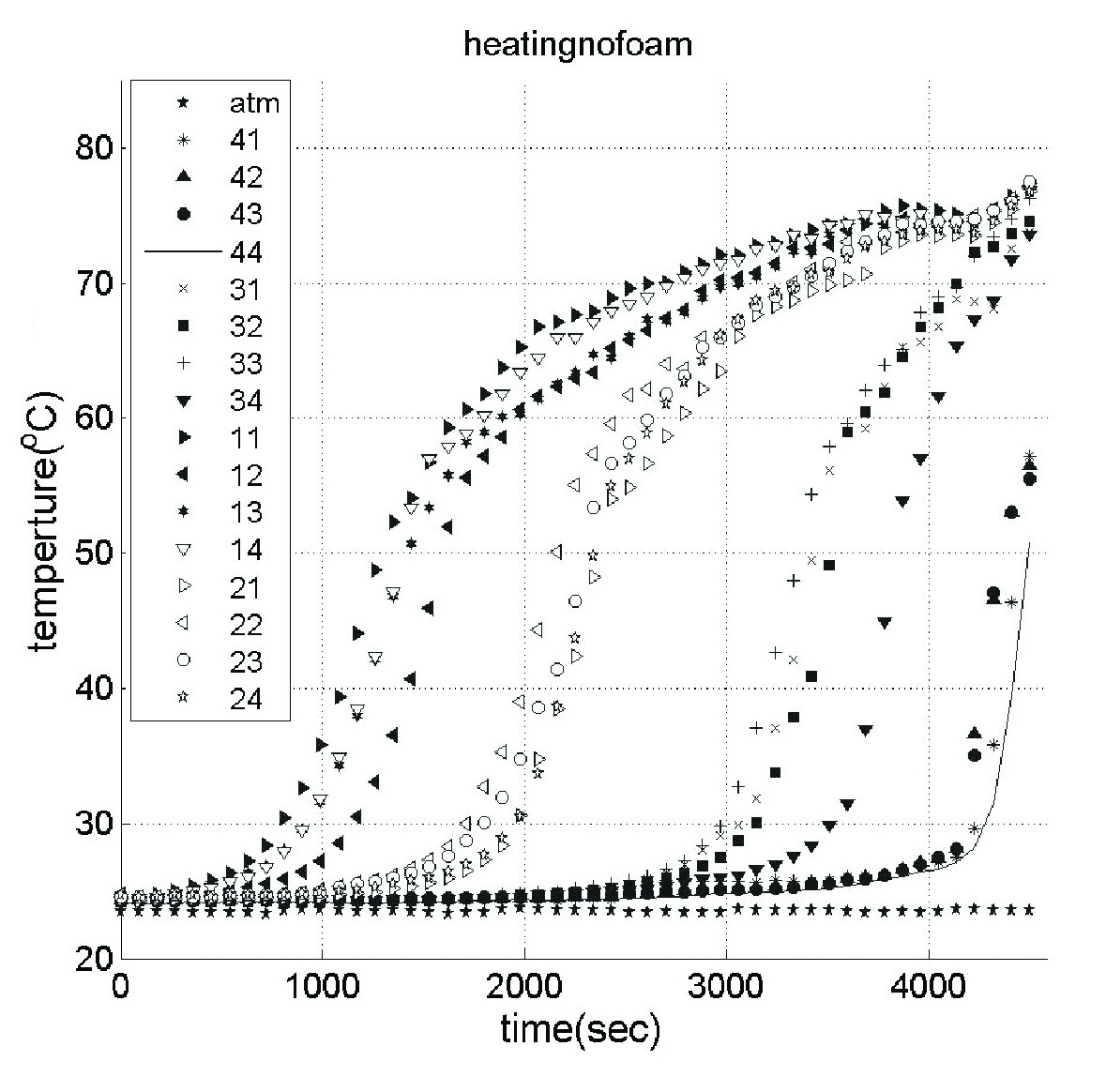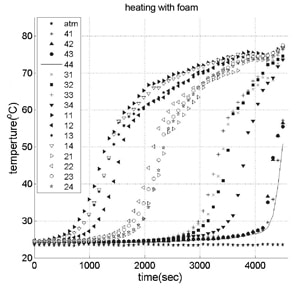For optimal operation of electronics, the generated heat must be removed and hot spots must be mitigated. If the junction temperature increases above a specified limit, some electronic components may fail, or experience a decline in performance. Excess temperature also causes thermal stresses that lead to fracture of electronic packages.
Phase change materials (PCMs) are excellent for storing heat due to their high latent heat of fusion [1-3]. PCMs need higher conductivity to improve their performance [2,3].
Aluminum foam has low density, high thermal conductivity and interconnectivity [4]. Its applications include heat exchangers and lightweight structural components. A plate fin heat sink with the tip immersed in a PCM showed enhanced performance [5].
This brief discusses an experimental study of a thermal storage technology made by embedding aluminum foam in Paraffin wax, along with the resulting enhancements. Further details can be found in reference [6]. For some electronics devices under transient conditions, an increased thermal capacitance can limit temperature increases and/or reduce the cooling requirement of a heat sink. The combination of aluminum foam and PCMs can provide this thermal capacitance and furnish a nearly-isothermal heat sink while the PCMs are melting.

Experiment
The commercial foam used in this study was made from aluminum alloy 6101-T6 and had 4 pores per cm and 90% porosity. The paraffin wax used in this experiment had a melting temperature of 60 oC. Heating was provided by an electric heater attached to an aluminum plate of 0.63 cm thickness and a face size of 10.16 x 10.16 cm2. A variac controlled the wattage that was supplied to the heater.
The wax and the foam/wax combination were contained in a wooden cavity having a depth of 10.8 cm and a cross-sectional area of 10.16 x 10.16 cm2. Thermocouples were inserted at various depths in groups of four at 2.54, 5.08, 6.35 and 8.38 cm from the top, respectively. A data acquisition system recorded the temperatures.
A volume of 1048 cm3 of wax was preheated to a temperature above its melting point and was poured into the wooden cavity. After cooling to ambient temperature, the bottom heater provided a constant heat input of 82.3 W. The temperatures were recorded every three seconds, until all the thermocouples readings were above the melting point of the wax.
With the wax in its liquid phase, a cube of foam with a side length of approximately 10.16 cm was inserted into it very slowly to avoid formation of air pockets. The foam had a porosity of 90 %. The foam/wax combination was allowed to cool to room temperature. The electric heater was switched back on and provided 82.3 W. The temperature of each thermocouple was recorded until the temperature of the uppermost thermocouple was above the melting point of the wax.

Results
Figures 1 and 2 show the temperature profiles during the period of heating for the two cases. To understand the heating patterns, and to assess the enhancement due to foam addition, consider an imaginary vertical line along the time 2000 seconds in Figs. 1 and 2. At 2000 seconds, no-foam case temperatures ranged from 20 to 70 oC. This means that the top surface was still solid (at ambient temperature), while the wax at the bottom was liquid (above the melting point). The foam/wax heating temperature ranges from 33 to 54 oC. Thus, the temperature gradient for no-foam is almost twice greater than that of the with-foam case.
Table 1 gives the maximum temperature and the time required for the wax to melt for the two cases. The foam reduced the heating time by 15%, while the maximum temperature was 11% less than for no-foam heating.

Conclusion
The conductivity of paraffin wax was enhanced by combining it with aluminum foam. Heating curves at different locations were obtained experimentally for the wax alone and the wax/foam combination. The results proved that the inclusion of foam decreased the charging time by 15.3%, and the maximum temperature by 10.5%. The foam also improved the heat distribution in the wax, which made the temperature significantly more uniform during charging. For some electronics devices under transient conditions, the combination of aluminum foam and PCMs overcomes the issue of the low conductivity of PCMs and can provide an increased thermal capacitance which limits temperature increases and/or reduce the cooling requirement of a heat sink.
References
[1] O. E. Ataer, “Storage of Thermal Energy,” in Energy Storage Systems, Edited by Y. A. Gogus, in Encyclopedia of Life Support Systems, Eolss Publishers, Oxford, UK, 2006.
[2] A. Heinz and W. Streicher, “Application of Phase Change Materials and PCM-Slurries for Thermal Energy Storage,” Institute of Thermal Engineering, Graz University of Technology, Austria, 2006.
[3] J. Wilson, “Phase Change Materials Thermal Properties,” Electronics Cooling, Issue: May 1st, 2005.
[3] N. Dukhan, “Correlations for the Pressure Drop for Flow through Metal Foam,” Experiments in Fluids, vol. 41, pp. 665-672, 2006.
[4] S. Krishnan, S. V. Garimella and S. S. Kang, “A Novel Hybrid Heat Sink Using Phase Change Materials for Transient Thermal Management of Electronics,” IEEE Transactions on Components and Packaging Technologies, vol. 28, No. 2, pp. 281-289, 2005.
[5] N. Dukhan and S. Bodke, “An Improved PCM Heat Storage Technology Utilizing Metal Foam,” Proceedings of IEEE iTherm Conference, Las Vegas, NV, June 2-5, 2010.






